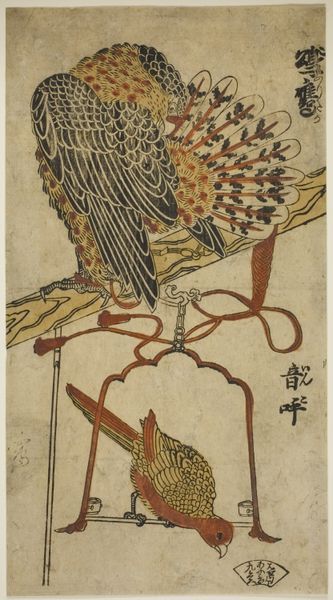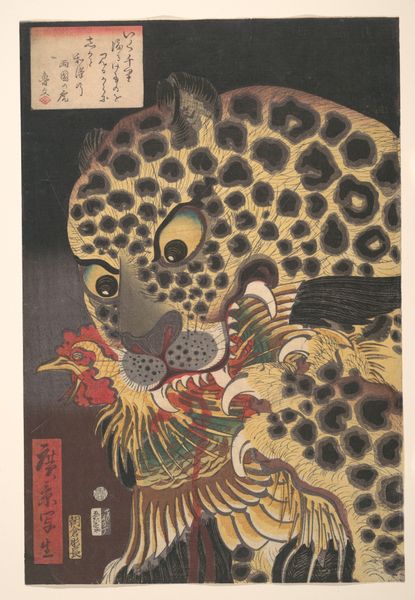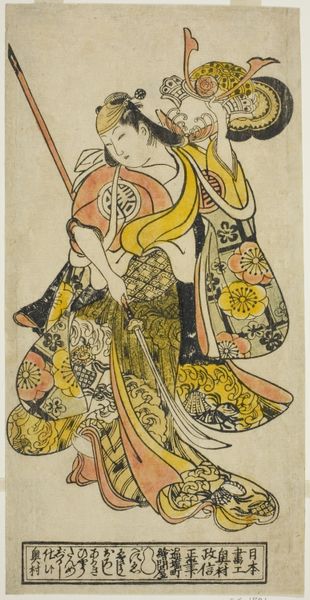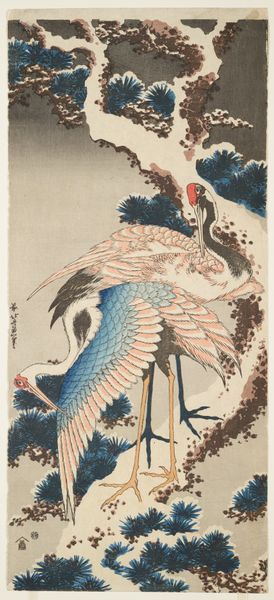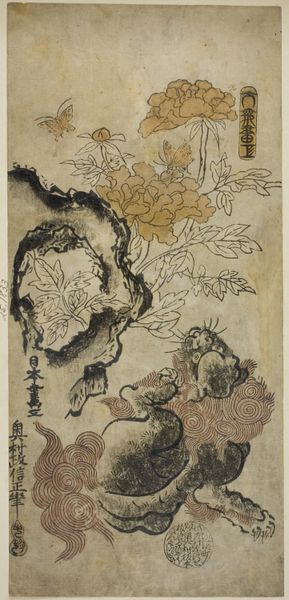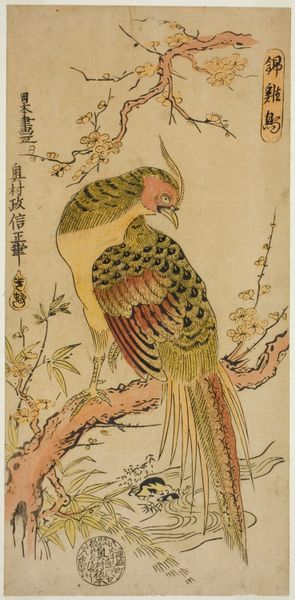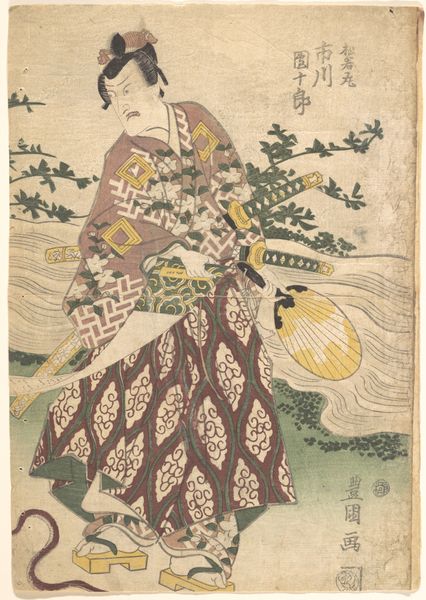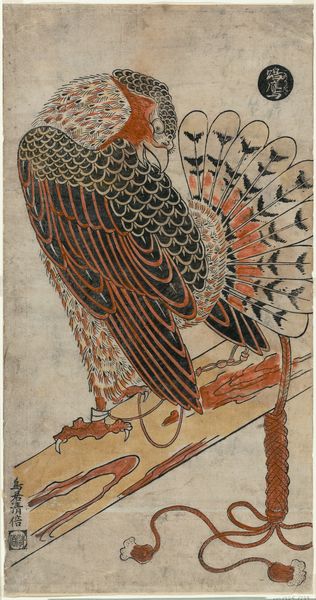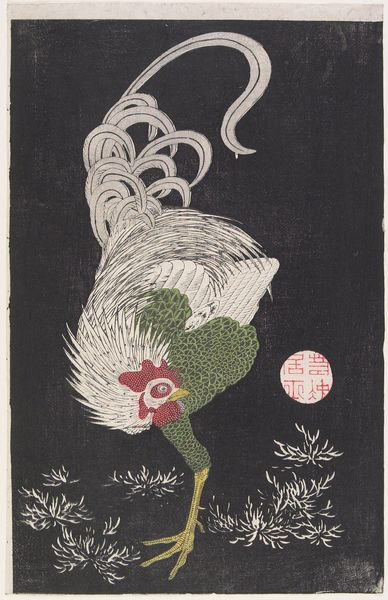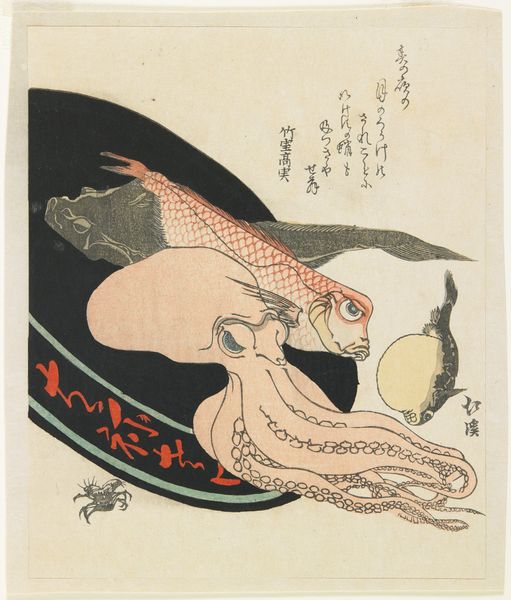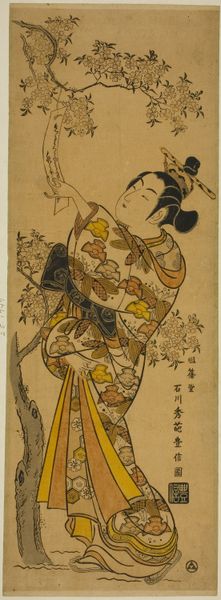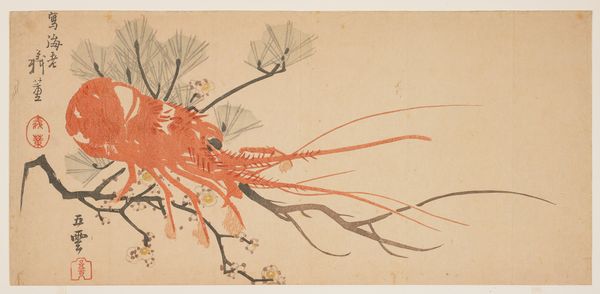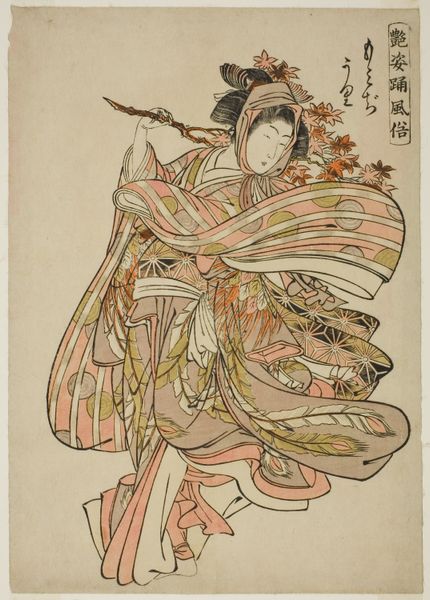
print, woodcut
#
ink painting
# print
#
asian-art
#
ukiyo-e
#
figuration
#
woodcut
Dimensions: 56.0 × 28.5 cm
Copyright: Public Domain
Editor: This is "A Hawk Capturing a Crane in Flight," a woodcut print by Torii Kiyomasu I, around 1715, currently held at The Art Institute of Chicago. I am struck by the dynamism captured in such a limited color palette; how would you interpret its formal qualities? Curator: Note the compositional tension: the stark diagonal created by the hawk’s descent is countered by the implied upward struggle of the crane. Kiyomasu has expertly manipulated the line – thick, bold outlines – to define forms and create a sense of immediacy. Do you observe how the stylized rendering of feathers adds to the decorative flatness characteristic of ukiyo-e prints, despite the illusion of depth? Editor: Yes, I see what you mean. It is quite interesting how the print flattens the image yet suggests motion. Is that common for woodcuts of this era? Curator: Indeed. The interplay between depth and flatness is further enhanced by the use of color. Observe the limited palette; predominantly earthy tones, strategically placed to highlight the hawk’s predatory power. Are you perceiving a structural framework built with the interaction between line, color, and shape? Editor: It's clever how the restricted palette creates depth while maintaining a stylistic aesthetic. What I initially read as simply ‘flat’ is a network of shapes. Curator: Precisely! Ukiyo-e prints often prioritize stylized representation over realistic depiction. It’s about conveying essence and motion through a carefully constructed visual language. Considering the interplay of these structural elements and their impact allows for a deeper engagement with the piece. Editor: Thanks for clarifying! The conversation expanded how I see the piece, and my focus shifted from simply what is pictured to *how* it's pictured. Curator: You're most welcome. That is a valuable distinction when approaching any work of art.
Comments
No comments
Be the first to comment and join the conversation on the ultimate creative platform.
